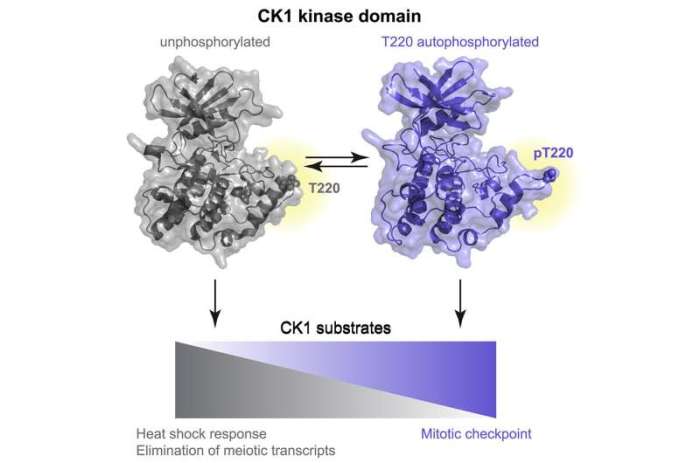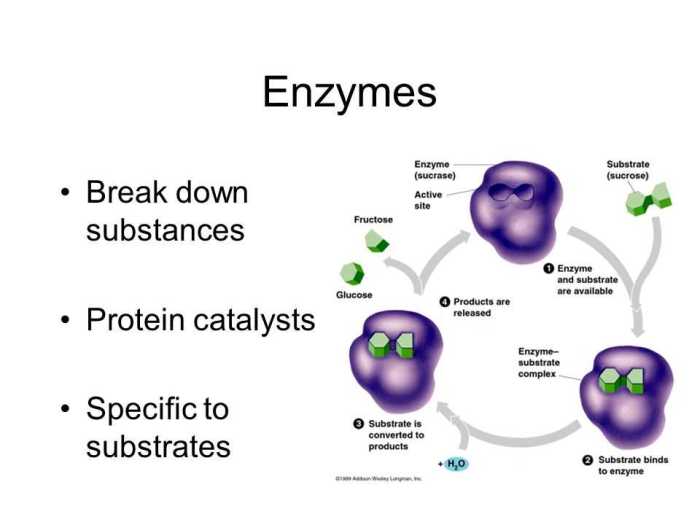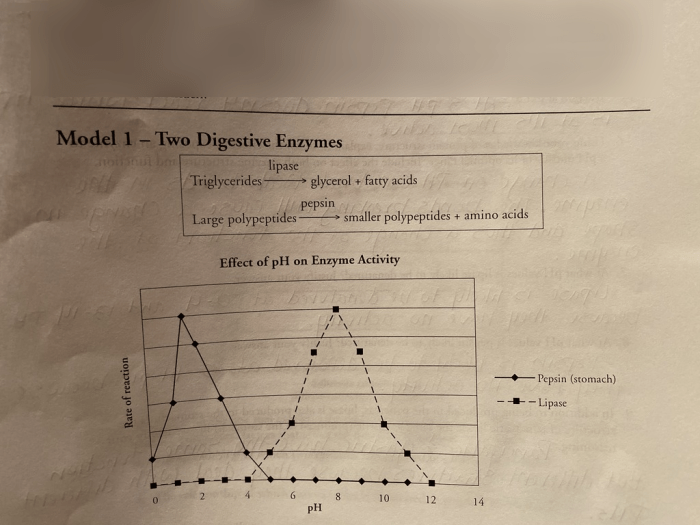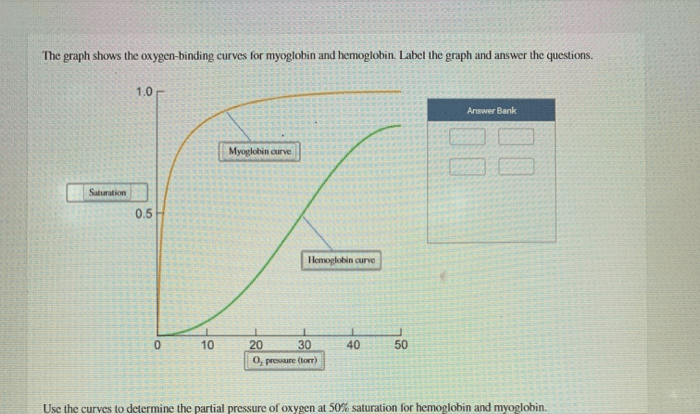In the realm of biochemistry, enzyme and cellular regulation pogil stands as a cornerstone, orchestrating the intricate symphony of life’s processes. Enzymes, the molecular maestros, catalyze biochemical reactions, while cellular regulation ensures the harmonious functioning of cells, maintaining homeostasis and responding to environmental cues.
Together, they form a dynamic duo, shaping the very fabric of life.
This comprehensive guide delves into the depths of enzyme structure and function, exploring the mechanisms of enzyme regulation and their profound impact on cellular processes. It unveils the experimental techniques that illuminate the intricate workings of enzyme regulation, providing a roadmap for scientific discovery.
Enzyme Structure and Function

Enzymes are biological molecules that act as catalysts for biochemical reactions, accelerating their rate without being consumed in the process. They play a crucial role in various cellular processes, including metabolism, DNA replication, and signal transduction.
Enzymes have a specific structure that enables their catalytic activity. They consist of a protein component, known as the apoenzyme, and a non-protein component, called the cofactor or coenzyme. The cofactor can be an inorganic ion (e.g., metal ion) or an organic molecule (e.g.,
vitamin).
Active Site
The active site is a specific region of the enzyme where the substrate, the molecule that undergoes the reaction, binds. The active site contains amino acid residues that interact with the substrate, providing a favorable environment for the reaction to occur.
Cofactors, Enzyme and cellular regulation pogil
Cofactors are essential for enzyme activity and can be tightly or loosely bound to the enzyme. They participate in the catalytic reaction by providing functional groups or electrons necessary for the reaction to proceed.
Types of Enzymes
There are numerous types of enzymes, each with a specific function. Some common examples include:
- Hydrolases: Break down complex molecules by hydrolysis (addition of water), e.g., proteases (digest proteins), lipases (digest fats).
- Oxidoreductases: Catalyze oxidation-reduction reactions, e.g., dehydrogenases (remove hydrogen atoms), oxidases (add oxygen atoms).
- Transferases: Transfer functional groups from one molecule to another, e.g., kinases (transfer phosphate groups), methyltransferases (transfer methyl groups).
- Lyases: Break down molecules by non-hydrolytic cleavage, e.g., decarboxylases (remove carbon dioxide).
- Isomerases: Convert one isomer of a molecule to another, e.g., mutases (change the position of functional groups).
- Ligases: Join two molecules together with the hydrolysis of ATP, e.g., DNA ligase (joins DNA strands).
Enzyme Regulation

Enzyme regulation is a crucial mechanism that ensures the precise control of cellular processes. It involves modulating enzyme activity to maintain homeostasis and respond to changing cellular conditions.
Enzyme regulation occurs through various mechanisms, including feedback inhibition, allosteric regulation, and covalent modification.
Feedback Inhibition
Feedback inhibition is a type of negative feedback regulation where the end product of a metabolic pathway inhibits the activity of the first enzyme in the pathway. This prevents the overproduction of the end product and maintains a steady-state concentration.
Allosteric Regulation
Allosteric regulation involves the binding of a molecule, known as an allosteric effector, to a specific site on an enzyme. This binding can either activate or inhibit enzyme activity, depending on the nature of the effector.
Covalent Modification
Covalent modification refers to the chemical alteration of an enzyme by the addition or removal of chemical groups. This can involve phosphorylation, methylation, or acetylation, and can significantly alter enzyme activity.
Enzyme regulation is essential for controlling metabolic pathways and maintaining cellular homeostasis. It allows cells to fine-tune their metabolism, respond to environmental changes, and ensure the efficient use of resources.
Cellular Regulation: Enzyme And Cellular Regulation Pogil

Cellular regulation refers to the coordinated processes that maintain homeostasis within a cell. It involves monitoring and adjusting various cellular activities in response to internal and external cues.
Cellular regulation ensures the proper functioning of cellular processes, such as metabolism, growth, and differentiation. It allows cells to adapt to changing environmental conditions and maintain a stable internal environment.
Mechanisms of Cellular Regulation
Cellular regulation is achieved through various mechanisms, including:
- Gene expression: The regulation of gene expression determines which genes are transcribed and translated into proteins. This process can be influenced by transcription factors, hormones, and environmental signals.
- Signal transduction: Signal transduction pathways transmit signals from the cell’s exterior to the interior, triggering specific cellular responses. These pathways involve receptors, second messengers, and intracellular signaling molecules.
- Protein degradation: The selective degradation of proteins plays a crucial role in regulating cellular processes. Proteins can be targeted for degradation by various mechanisms, including the ubiquitin-proteasome system.
Examples of Cellular Regulation
Cellular regulation is essential for maintaining homeostasis in response to environmental changes:
- Hormonal regulation: Hormones act as messengers that trigger cellular responses. For example, insulin regulates glucose metabolism in response to blood glucose levels.
- Temperature regulation: Cells can adjust their metabolism and gene expression to maintain an optimal temperature range. For instance, in response to cold temperatures, cells may increase their production of heat-generating proteins.
- Nutrient availability: Cells can sense and respond to changes in nutrient availability. For example, when glucose levels are low, cells may activate metabolic pathways that break down alternative energy sources.
Enzyme Regulation and Cellular Regulation
Enzyme regulation plays a critical role in cellular regulation, enabling cells to respond to changes in their environment and maintain homeostasis. By controlling the activity of specific enzymes, cells can fine-tune metabolic pathways, signaling cascades, and other cellular processes.
Enzyme regulation can be achieved through various mechanisms, including:
- Allosteric regulation:Binding of specific molecules (effectors) to allosteric sites on the enzyme, causing conformational changes that alter its activity.
- Covalent modification:Addition or removal of chemical groups (e.g., phosphorylation, acetylation) to the enzyme, affecting its activity.
- Gene expression regulation:Controlling the transcription or translation of the gene encoding the enzyme, altering its abundance and activity.
Examples of Enzyme Regulation in Cellular Responses
Enzyme regulation is crucial for coordinating cellular responses to environmental changes. For instance:
- Glucose metabolism:Insulin stimulates the translocation of glucose transporters to the cell membrane, increasing glucose uptake. This leads to increased activity of glycolytic enzymes, promoting glucose utilization and energy production.
- Stress response:Heat shock proteins are upregulated in response to stress conditions. These proteins act as chaperones, preventing protein misfolding and aggregation, and facilitating protein repair.
- Circadian rhythm:Many enzymes involved in metabolism and other cellular processes exhibit circadian rhythms, with their activity varying over a 24-hour period. This helps coordinate cellular functions with the day-night cycle.
Experimental Techniques for Studying Enzyme Regulation

The study of enzyme regulation is crucial for understanding cellular processes. Experimental techniques play a vital role in elucidating the mechanisms of enzyme regulation.
Enzyme Assays
Enzyme assays measure enzyme activity under specific conditions. They involve incubating an enzyme with its substrate and quantifying the rate of product formation. By varying reaction conditions, such as substrate concentration, pH, or temperature, enzyme assays can provide insights into the enzyme’s kinetic properties and regulatory factors.
Kinetic Studies
Kinetic studies analyze the relationship between enzyme activity and substrate concentration. They involve measuring the initial rate of reaction at varying substrate concentrations. The resulting data can be used to determine kinetic parameters, such as Michaelis-Menten constant (Km) and maximum velocity (Vmax), which provide information about enzyme-substrate interactions and regulatory mechanisms.
Genetic Analysis
Genetic analysis involves studying the effects of genetic mutations on enzyme activity. By introducing mutations into the enzyme gene and analyzing the resulting enzyme, researchers can identify amino acid residues or regulatory regions that are critical for enzyme function and regulation.
Examples of Experimental Techniques
- Enzyme assays:Used to determine the kinetic parameters of enzymes, such as Km and Vmax, and to study the effects of inhibitors and activators.
- Kinetic studies:Used to determine the rate of reaction at different substrate concentrations and to identify rate-limiting steps in enzyme-catalyzed reactions.
- Genetic analysis:Used to identify amino acid residues or regulatory regions that are critical for enzyme function and regulation, and to study the effects of mutations on enzyme activity.
Commonly Asked Questions
What is the role of enzymes in biochemical reactions?
Enzymes act as catalysts, accelerating the rate of biochemical reactions without being consumed themselves.
How does feedback inhibition regulate enzyme activity?
Feedback inhibition occurs when the end product of a metabolic pathway inhibits the activity of an enzyme earlier in the pathway, preventing overproduction.
What is the significance of allosteric regulation in cellular processes?
Allosteric regulation allows enzymes to be modulated by molecules that bind to sites distinct from the active site, influencing enzyme activity.
